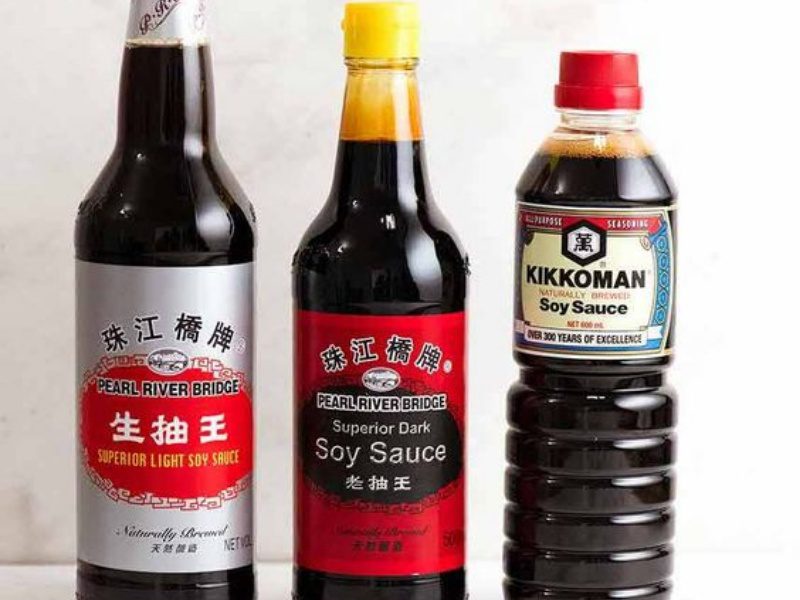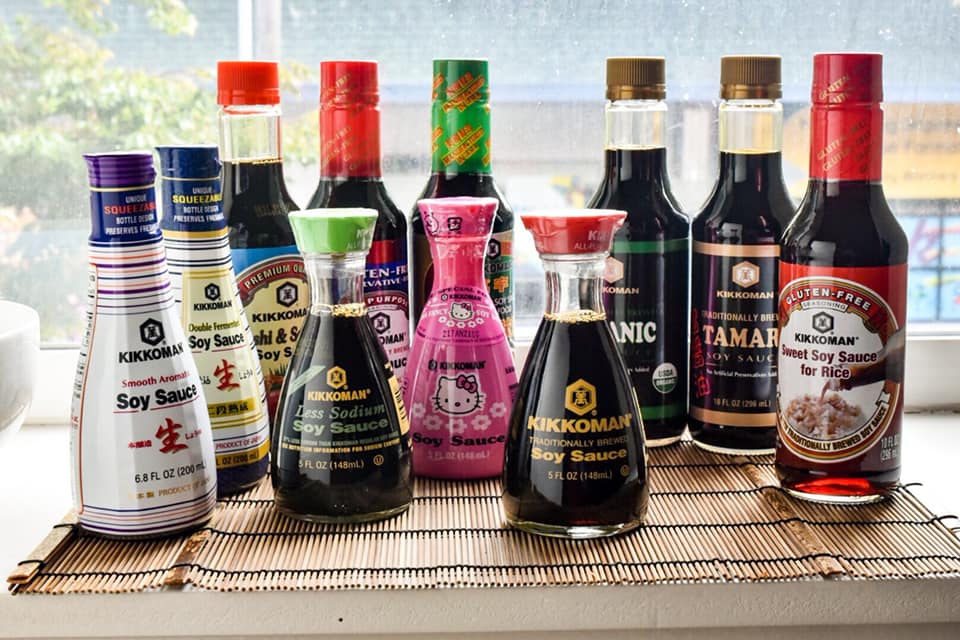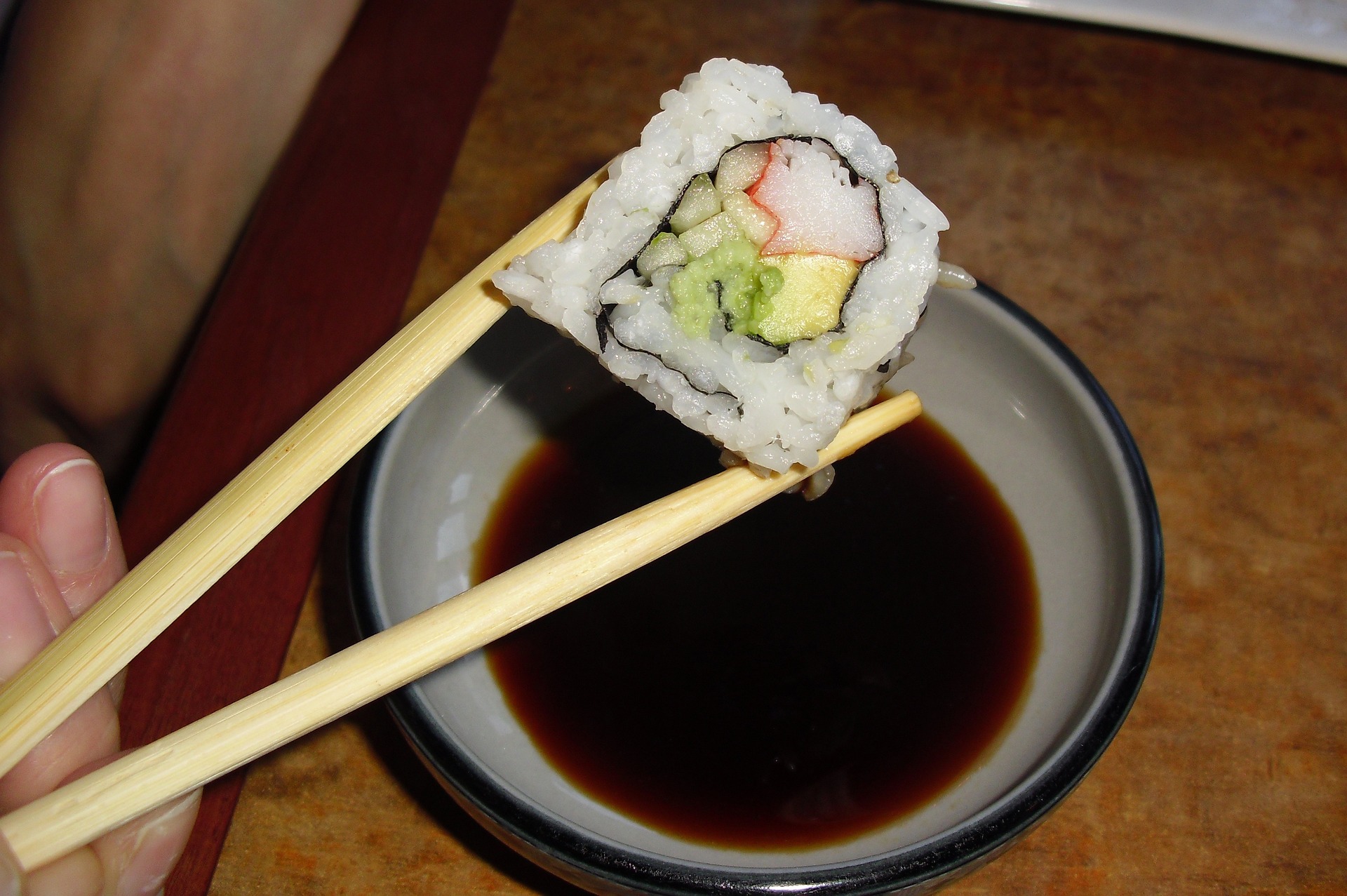Introduction

Soy sauce and Worcestershire sauce are both popular condiments used to enhance the flavor of dishes. While they may seem similar, they have distinct differences in terms of origin, ingredients, and flavor profiles. Understanding these differences can help in choosing the right sauce for a particular recipe. In this article, we will explore the history and origins of soy sauce and Worcestershire sauce, delve into their production processes, discuss their health benefits, and examine their culinary uses and flavor profiles. We will also compare their contrasting tastes and explore popular recipes that feature these sauces. So, let’s dive into the world of soy sauce and Worcestershire sauce and discover the unique qualities of each condiment.
History And Origin Of Soy Sauce And Worcestershire Sauce
Soy sauce has a long history that can be traced back to ancient China. It is believed to have originated over 2,500 years ago during the Zhou dynasty. Soy sauce was initially developed as a way to preserve and enhance the taste of food. It gradually spread across Asia and reached Japan, where it further evolved into different varieties.
On the other hand, Worcestershire sauce has a more recent origin. It was created in the early 19th century by Lea & Perrins, a company based in Worcester, England. The sauce is said to have been developed by accident when a batch of fermented fish sauce, which was a common ingredient in Southeast Asian cooking, turned out to be delicious. The recipe was then refined and Worcestershire sauce was born.
Soy Sauce
Soy sauce is a traditional Asian condiment that has been popular for centuries. It is made from fermented soybeans, roasted grains, water, and salt. The process of making soy sauce involves fermenting the soybeans and grains to develop its distinct umami flavor. There are different types of soy sauce, including light soy sauce, dark soy sauce, and tamari sauce, each with its own flavor and usage.
Soy sauce is a staple in Asian cuisine and is widely used in marinades, stir-fries, and as a dipping sauce. It adds depth and richness to dishes and enhances their overall flavor. In addition to its flavor-enhancing properties, soy sauce also has some health benefits. It is a good source of protein, iron, and antioxidants. However, it is high in sodium, so it should be used in moderation. Overall, soy sauce is a versatile and tasty condiment that adds a distinct flavor to a variety of dishes.
Types Of Soy Sauce And Their Production Process

Soy sauce comes in various types, each with its unique flavor and usage. The most common types include light soy sauce, dark soy sauce, and tamari sauce.
Light Soy Sauce: This is the most commonly used soy sauce. It has a thin consistency and a light, salty flavor. It is usually used for stir-frying, marinades, and dipping sauces.
Dark Soy Sauce: Dark soy sauce is thicker and has a more intense flavor. It is often used to add color and richness to dishes such as braised meats and stews.
Tamari Sauce: Tamari sauce is a gluten-free alternative to soy sauce. It has a slightly sweeter taste and is commonly used in Japanese cuisine.
The production process of soy sauce involves fermenting soybeans and roasted grains with salt and water. The mixture is left to ferment for several months to develop its distinct umami flavor. After fermentation, the mixture is pressed to extract the liquid, which is then aged before being bottled and sold.
Health Benefits Of Using Soy Sauce
Soy sauce offers several health benefits due to its rich nutritional profile.
- Contains essential amino acids: Soy sauce is a good source of essential amino acids, which are necessary for building proteins and maintaining proper bodily functions.
- Antioxidant properties: Soy sauce contains antioxidants, such as phytochemicals and flavonoids, that help protect the body against free radicals and oxidative stress.
- Boosts digestion: The fermented nature of soy sauce makes it rich in probiotics, which can improve digestion and promote a healthy gut.
- Low in calories: Soy sauce is relatively low in calories, making it a healthier alternative to other condiments that are high in fats and sugars.
- Provides essential minerals: Soy sauce contains minerals like iron, magnesium, and potassium, which are important for maintaining overall health and well-being.
- Supports heart health: Research suggests that soy sauce can help lower blood pressure and reduce the risk of cardiovascular diseases.
Despite these health benefits, it is important to consume soy sauce in moderation due to its high sodium content.
Worcestershire Sauce
Worcestershire Sauce is a traditional condiment that originated in Worcestershire, England. It is made from a blend of vinegar, molasses, anchovies, garlic, onions, tamarind, and various spices. The recipe for Worcestershire sauce is closely guarded and has been passed down through generations. The sauce has a complex flavor profile that is tangy, savory, and slightly sweet, with a hint of umami from the anchovies. Worcestershire sauce is commonly used in marinades, dressings, and as a flavor enhancer in a variety of dishes, including meat dishes, soups, and cocktails. Its distinctive taste adds depth and richness to culinary creations.
Ingredients And Traditional Recipe Of Worcestershire Sauce

Worcestershire Sauce is known for its complex flavor profile, which is achieved through a unique blend of ingredients. The traditional recipe for Worcestershire Sauce includes vinegar, molasses, anchovies, garlic, onions, tamarind, and various spices. These ingredients are carefully combined and left to ferment for several months, allowing the flavors to meld together and develop a rich, tangy taste. The recipe for Worcestershire Sauce is closely guarded by the manufacturers, passed down through generations, ensuring the sauce’s distinct and authentic flavor. Its intricate combination of ingredients makes Worcestershire Sauce a versatile and flavorful condiment in various culinary creations.
Culinary Uses And Flavor Profile Of Worcestershire Sauce
Worcestershire Sauce is a versatile condiment that adds a complex and tangy flavor to a wide range of dishes. Its distinct taste enhances the flavors of marinades, sauces, and dressings. Worcestershire Sauce is commonly used in classic recipes such as Caesar salad dressing, beef stews, and Bloody Mary cocktails. Its umami-rich flavor profile, combined with a hint of sweetness and a subtle spicy kick, makes it a popular choice for adding depth to meats, seafood, and vegetarian dishes. Its unique combination of ingredients makes Worcestershire Sauce a must-have pantry staple for any aspiring chef.
Flavor Profiles
The flavor profiles of soy sauce and Worcestershire sauce are distinct and offer different taste experiences. Soy sauce is known for its rich, salty, and savory flavor, with a slight sweetness and umami undertones. It adds depth and enhances the flavors of dishes, especially in Asian cuisine. On the other hand, Worcestershire sauce has a more complex taste, combining tanginess, sweetness, and a subtle spicy kick. Its umami-rich flavor complements a wide range of dishes, from meat and seafood to vegetarian options. The contrasting flavors of soy sauce and Worcestershire sauce make them versatile condiments that can be used to achieve different taste profiles in recipes.
Contrasting Tastes And Uses Of Soy Sauce And Worcestershire Sauce

Soy sauce and Worcestershire sauce offer contrasting tastes and have unique culinary uses.
Soy sauce is known for its rich, salty, and savory flavor, with a hint of sweetness and umami undertones. It is commonly used in Asian cuisine to enhance the flavors of stir-fries, marinades, and dipping sauces. It works well with seafood, meats, and vegetarian dishes.
On the other hand, Worcestershire sauce has a more complex flavor profile, combining tanginess, sweetness, and a subtle spicy kick. Its rich umami taste complements a wide range of dishes, from grilled meats and burgers to soups and stews. It adds depth and richness to recipes.
While both sauces can add depth and enhance flavors, the distinct tastes of soy sauce and Worcestershire sauce make them versatile condiments that can be used in various cuisines and recipes.
Popular Recipes
Soy Sauce and Worcestershire Sauce are versatile condiments that are widely used in various recipes to enhance flavor. Here are some popular recipes that highlight the unique characteristics of these sauces:
- Soy-Glazed Salmon: Marinate salmon fillets in a mixture of soy sauce, honey, ginger, and garlic, then grill or bake for a flavorful and easy meal.
- Worcestershire Burger: Mix Worcestershire sauce, ground beef, minced onions, and seasonings to create juicy and savory burgers. Top with cheese and your favorite toppings for a delicious meal.
- Stir-Fried Vegetables with Soy Sauce: Sauté a mix of colorful vegetables in a hot pan with soy sauce, garlic, and sesame oil for a quick and healthy side dish.
- Worcestershire Beef Stew: Add Worcestershire sauce to a hearty beef stew along with other aromatics like onion, carrots, and potatoes. The sauce infuses the dish with rich, savory flavors.
- Teriyaki Chicken Skewers: Marinate chicken pieces in a mixture of soy sauce, honey, ginger, and garlic. Thread onto skewers and grill or bake for a tasty and satisfying appetizer or main course.
These recipes showcase the unique flavors and culinary uses of soy sauce and Worcestershire sauce, adding depth and complexity to a variety of dishes.
Recipes Featuring Soy Sauce Or Worcestershire Sauce
Whether you’re a fan of Asian cuisine or prefer classic American flavors, both soy sauce and Worcestershire sauce can add a delicious twist to your recipes. Here are a few mouth-watering dishes that highlight the versatility of these condiments:
- Soy-Glazed Salmon: Marinate salmon fillets in a mixture of soy sauce, honey, ginger, and garlic, then grill or bake for a flavorful and easy meal.
- Worcestershire Burger: Mix Worcestershire sauce, ground beef, minced onions, and seasonings to create juicy and savory burgers. Top with cheese and your favorite toppings for a delicious meal.
- Stir-Fried Vegetables with Soy Sauce: Sauté a mix of colorful vegetables in a hot pan with soy sauce, garlic, and sesame oil for a quick and healthy side dish.
- Worcestershire Beef Stew: Add Worcestershire sauce to a hearty beef stew along with other aromatics like onion, carrots, and potatoes. The sauce infuses the dish with rich, savory flavors.
- Teriyaki Chicken Skewers: Marinate chicken pieces in a mixture of soy sauce, honey, ginger, and garlic. Thread onto skewers and grill or bake for a tasty and satisfying appetizer or main course.
These recipes showcase the unique flavors and culinary uses of soy sauce and Worcestershire sauce, adding depth and complexity to a variety of dishes. So, whether you’re looking for an Asian-inspired meal or a classic American favorite, these sauces have got you covered.
Ways To Incorporate Both Condiments In Cooking

There are plenty of delicious ways to incorporate both soy sauce and Worcestershire sauce into your cooking. Here are a few ideas to get you started:
- Marinades and sauces: Combine soy sauce and Worcestershire sauce to create a flavorful marinade for meats, poultry, or tofu. You can also mix them together to create a delicious sauce for stir-fries or grilled vegetables.
- Salad dressings: Add a splash of soy sauce and Worcestershire sauce to your homemade salad dressings for an extra layer of umami and complexity.
- Glazes: Use a mixture of soy sauce and Worcestershire sauce as a glaze for roasted or grilled meats, giving them a savory, caramelized finish.
- Dipping sauces: Create a delicious dipping sauce by combining soy sauce and Worcestershire sauce with other ingredients like garlic, ginger, or chili paste. This is perfect for dumplings, spring rolls, or chicken nuggets.
- Flavor enhancers: Add a few dashes of soy sauce and Worcestershire sauce to soups, stews, or sauces to enhance their depth of flavor.
Remember to taste as you go and adjust the amounts according to your preference. These versatile condiments can take your dishes to a new level of deliciousness!
Conclusion
In conclusion, Worcestershire sauce and soy sauce bring unique flavors and characteristics to the table. While soy sauce is known for its umami-rich taste and wide range of uses in Asian cuisine, Worcestershire sauce offers a complex blend of tangy, sweet, and savory flavors that can elevate dishes from various culinary traditions. Both condiments have their own distinct profiles and can greatly enhance the taste of marinades, sauces, glazes, and dressings. When choosing between the two, it’s important to consider the specific flavors and cooking styles of your dish. With Worcestershire sauce and soy sauce, you can bring a world of deliciousness to your cooking.
Key Differences Between Soy Sauce And Worcestershire Sauce
Soy sauce and Worcestershire sauce may both be condiments, but they have distinct differences in terms of taste, ingredients, and culinary uses. Here are the key differences between the two:
- Flavor profile: Soy sauce is known for its rich, umami flavor, while Worcestershire sauce offers a complex combination of tangy, sweet, and savory tastes.
- Ingredients: Soy sauce is made from fermented soybeans, wheat, water, and salt. Worcestershire sauce, on the other hand, is a blend of vinegar, molasses, sugar, onions, garlic, and various spices.
- Culinary uses: Soy sauce is widely used in Asian cuisine, enhancing the flavors of stir-fries, marinades, and sushi. Worcestershire sauce, on the other hand, is commonly used in Western dishes like gravies, marinades, and meat-based recipes.
Overall, the choice between soy sauce and Worcestershire sauce depends on the specific flavor profile and culinary tradition you’re aiming for in your dish.
Tips On Choosing The Right Sauce For Different Dishes

When it comes to choosing the right sauce for different dishes, there are a few tips to keep in mind. Consider the flavor profile of the dish and the sauce. For dishes that require a rich, umami flavor, soy sauce is an excellent choice. If you’re looking for a tangy and savory addition, Worcestershire sauce is the way to go. Additionally, consider the cuisine you’re preparing. Soy sauce works well in Asian dishes, while Worcestershire sauce is more commonly used in Western cuisine. Lastly, be mindful of the ingredients in the dish and choose a sauce that complements them. With these tips, you can select the perfect sauce to enhance your dishes with flavor and depth.
FAQ About Soy Sauce Vs Worcestershire Sauce: Contrasting Condiments
Q: What is the main difference between Soy Sauce and Worcestershire Sauce?
A: The main difference lies in their ingredients. Soy sauce is made from soybeans, water, salt, and wheat. On the other hand, Worcestershire sauce is made from vinegar, molasses, anchovies, tamarind extract, onions, garlic, and other seasonings.
Q: How do the flavors of Soy Sauce and Worcestershire Sauce compare?
A: Soy sauce has a salty and umami flavor, commonly used in Asian cuisine to enhance dishes. Meanwhile, Worcestershire sauce offers a more complex flavor profile with hints of sweetness, tanginess, and a slightly savory taste, often used in marinades and sauces.
Q: Can Soy Sauce be used as a substitute for Worcestershire Sauce and vice versa?
A: While both sauces are used to add savory depth to dishes, they have distinct flavors. Soy sauce is a suitable substitute for Worcestershire sauce in certain recipes but may not fully replicate the intended taste. Similarly, Worcestershire sauce can be used in place of soy sauce in some instances, but it will alter the dish’s flavor profile.
Q: Are there any notable cultural differences in the usage of Soy Sauce and Worcestershire Sauce?
A: Soy sauce is a staple in Asian cooking and is widely used in various dishes, while Worcestershire sauce has its origins in Western cuisine, particularly British and American recipes. The cultural context in which they are traditionally used may influence their prominence in different culinary traditions.
Q: Are there any health considerations to be aware of when using Soy Sauce or Worcestershire Sauce?
A: Both Soy Sauce and Worcestershire Sauce contain sodium, which may impact individuals with high blood pressure or specific dietary restrictions. It is advisable to use these condiments in moderation and consider low-sodium alternatives if necessary.
Q: Can Soy Sauce and Worcestershire Sauce be combined in cooking?
A: Yes, Soy Sauce and Worcestershire Sauce can be combined to create unique flavor profiles in dishes. Experimenting with different ratios of the two condiments can result in a fusion of savory and tangy tastes, adding depth to marinades, stir-fries, or sauces.
Q: Do Soy Sauce and Worcestershire Sauce require refrigeration after opening?
A: Once opened, both Soy Sauce and Worcestershire Sauce can be stored at room temperature without refrigeration, thanks to their high salt and vinegar content, which acts as a preservative. However, refrigerating them can help maintain their quality and prolong their shelf life.

Marine Bay Restaurant received the International Food Culture Award 2019 as the Best Szechuan & Hunan Restaurant, enjoying a reputation in North America. Renowned for the tunnel, authentic, and cheap. Known as “Human Taste First Garden,” 2013 Vancouver culinary first book named “Best Chuan Xiang Outlets,” significant temperature and China Eastern Airlines designated outlets.